Maine is a great place for bird watching, with plenty of geese to be seen.
We take a look at some of the different types of geese that can be found in Maine. Whether you’re a seasoned bird watcher or just getting started, keep reading for some helpful information on Maine’s geese!
What Geese Are in Maine?
Geese are a common sight in Maine, and they play an important role in the state’s ecosystem. There are three main species of geese that can be found in Maine:
- Canada Goose
- Cackling Goose
- Brant
Some goose species that migrate through Maine include the Great White-fronted Goose, Snow Goose and Atlantic Brant.
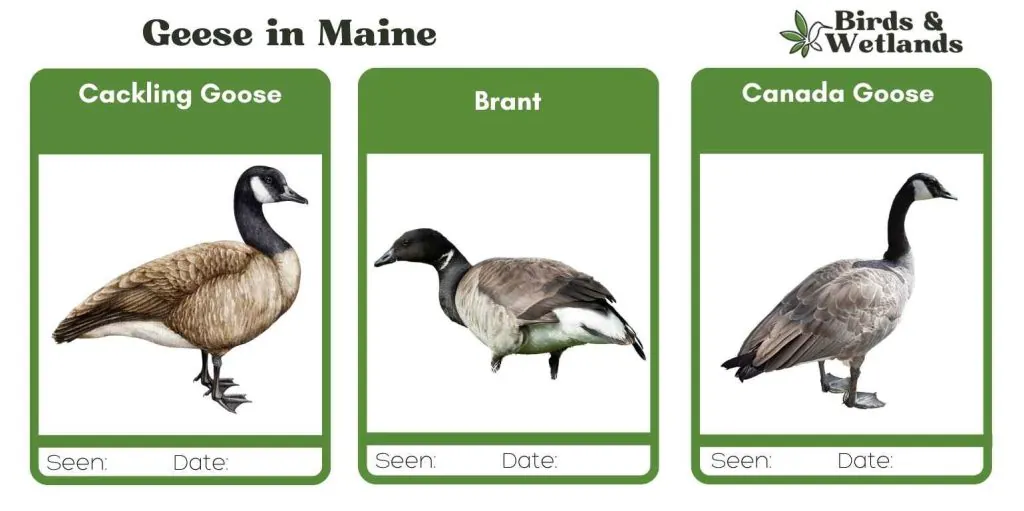
Canada Goose
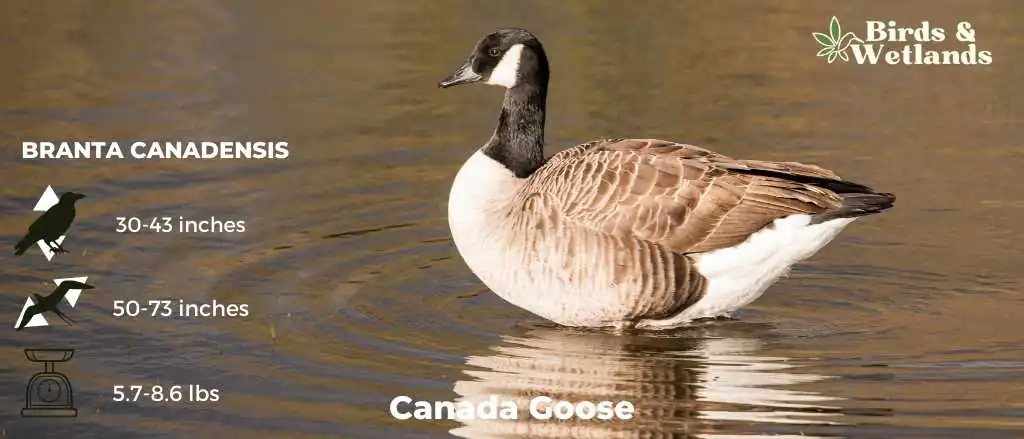
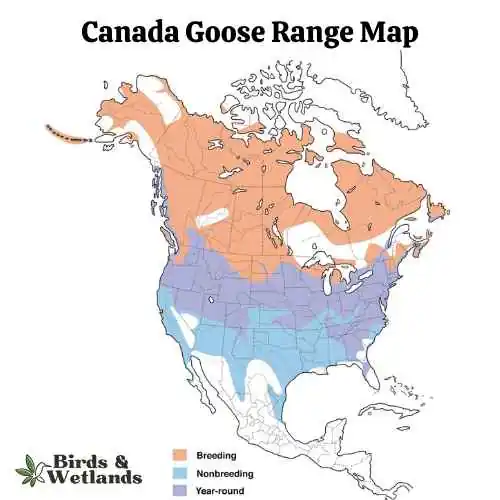
Canada Goose Sound
Scientific Name: Branta canadensis
Length: 30 to 43 in
Wingspan: 50–73 in
Weight: 5.7–14.3 lb
The Canada Goose is a large, well-known species of waterfowl noted for its distinctive appearance, familiar “honk,” and migratory behavior.
Appearance: Both male and female Canada Geese have a similar appearance, featuring a black head and neck with distinctive white patches on the cheeks and chin. The body is primarily brown with a lighter, often white, underbelly.
Diet: Canada Geese primarily feed on plant matter, including grasses, aquatic vegetation, and grains. They can often be seen grazing in parks, lawns, and fields, as well as dabbling in water bodies.
Reproduction: Canada Geese typically nest on the ground near water bodies, often on islands or other isolated areas to avoid predators. The female lays a clutch of about 4 to 6 eggs, which she incubates alone for around a month.
Cackling Goose
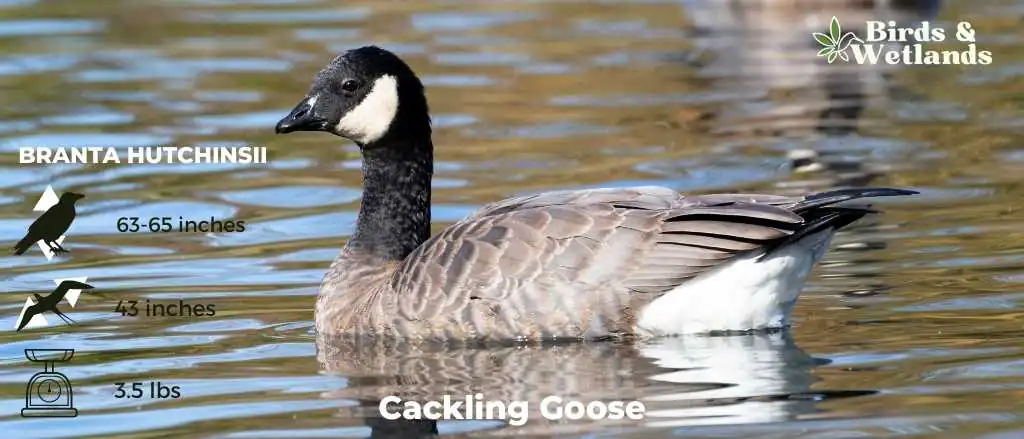
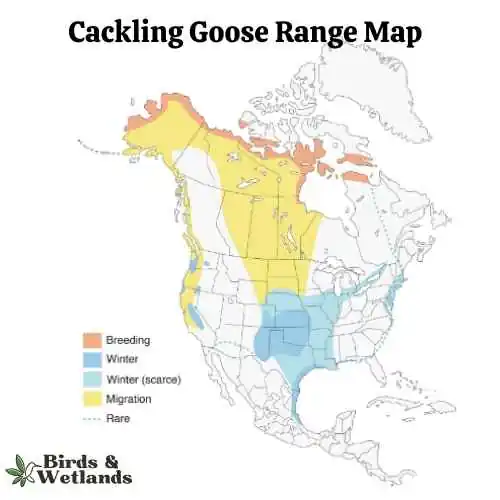
Listen
Scientific Name: Branta hutchinsii
Length: 24.8–25.6 in
Wingspan: 43-45.7 in
Weight:3.5 lbs
Cackling Geese are particularly known for their high-pitched, cackling calls, which is the source of their name. Despite their small size, these geese are renowned long-distance migrants, with some populations traveling thousands of miles between breeding and wintering grounds.
Appearance: With a similar color pattern to the larger Canada Goose, the Cackling Goose features a black head and neck, white chinstrap, light tan to cream chest, and brownish-grey body. One defining characteristic is its noticeably smaller size and stubbier neck compared to its larger counterparts.
Diet: Like many geese, the Cackling Goose’s diet mainly consists of plant matter. This includes grasses, seeds, and aquatic vegetation. They are often seen grazing on land or dabbling in shallow water.
Reproduction: Cackling Geese usually nest on the ground in elevated areas near water bodies, such as riverbanks or lakeshores. The female lays a clutch of 2 to 8 eggs and is responsible for incubation, while the male stands guard nearby. Incubation lasts for about a month.
Brant
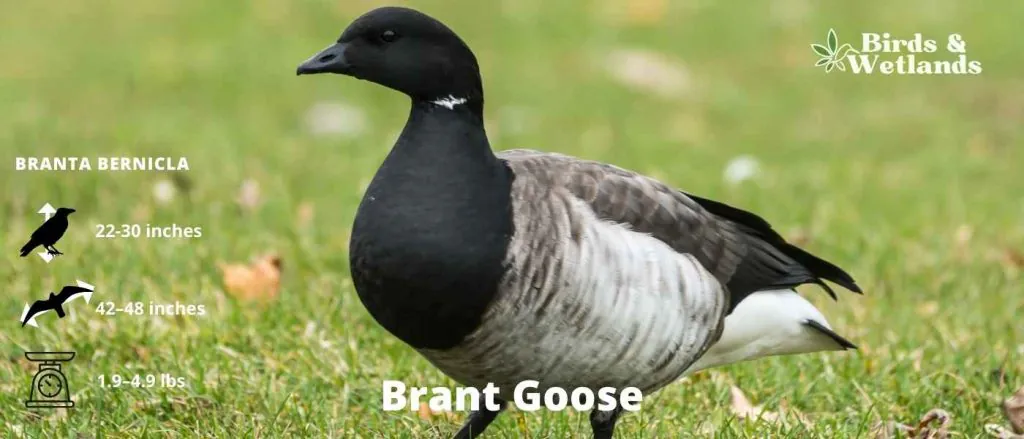
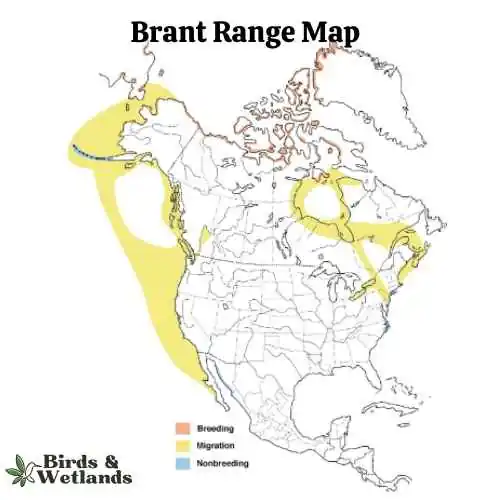
Listen
Scientific Name: Branta bernicla
Length: 22–26 in
Wingspan: 42–48 in
Weight: 1.9–4.9 lb
The Brant is a compact species of goose that is known for its striking appearance and interesting migratory patterns.
Appearance: The Brant is recognized for its dark, sooty color with a white crescent on the neck. The body is mostly black to dark gray, contrasting with the lighter underparts. Its small size, as compared to other geese, and short, stubby bill are other distinct features.
Diet: The Brant’s diet primarily consists of aquatic plants, especially eelgrass and sea lettuce. During the breeding season, they may also feed on grasses, sedges, and insects.
Reproduction: Brants typically breed in the high Arctic tundra. The female lays a clutch of 3 to 5 eggs in a ground nest, which she incubates for about a month.
Notably, Brants make an impressive long-distance migration every year. They spend their winters along both the east and west coasts of the United States and travel to the Arctic regions of Canada, Alaska, and even Russia to breed.
Hunting Geese in Maine
All waterfowl hunters age 16 and up must purchase state waterfowl permits and federal duck stamps.
Can You Shoot a Goose in Maine?
In the state of Maine, it is perfectly legal to shoot a goose – as long as you’re using the right type of weapon and following the correct protocol.
According to state law, it is only lawful to hunt migratory game birds with certain types of equipment, including dogs, artificial decoys, hand-held bow and arrow, crossbow, and the practice of falconry.
Also, the shotgun used must be no larger than a No. 10 gauge and must be fired from the shoulder. Any other method is considered unlawful.
Before you head out, make sure you are familiar with Maine’s updated daily bag and possession limits.
Where Can I Hunt Geese in State?
If you’re looking for the best place to hunt goose in Maine, look no further than Moosehorn National Wildlife Refuge.
This refuge is home to a variety of wildlife, including moose, deer, and, of course, geese. The refuge is also home to a variety of habitats, including wetlands, forests, and meadows.
Is There a Goose Hunting Season in State?
Yes, the goose hunting season in Maine starts from September to February.
Conclusion on Geese in Maine
If you’re one of the lucky people who get to see these amazing creatures in person, we hope you take some time to appreciate them. And if you’re not so lucky, be sure to keep your eyes peeled next time you’re out in nature – you never know when you might spot a goose in Maine!

